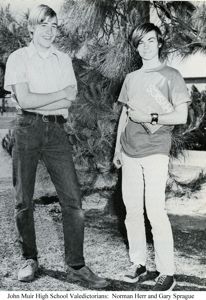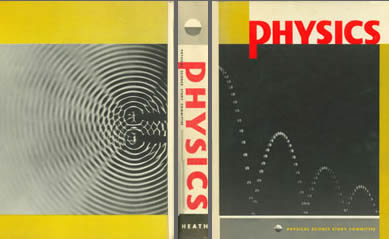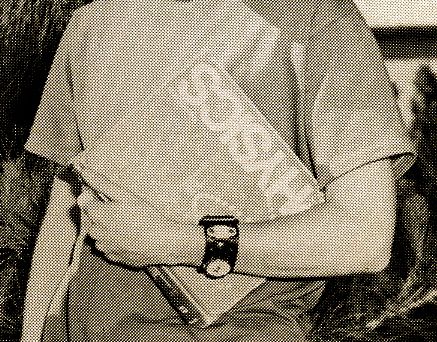PSSC - Physics Sciences Study Curriculum
 "In 1956 a group of university physics professors and high school physics teachers, led by MIT's Jerrold Zacharias and Francis Friedman, formed the Physical Science Study Committee (PSSC) to consider ways of reforming the teaching of introductory courses in physics. Educators had come to realize that textbooks in physics did little to stimulate students' interest in the subject, failed to teach them to think like physicists, and afforded few opportunities for them to approach problems in the way that a physicist should. In 1957, after the Soviet Union successfully orbited Sputnik , fear spread in the United States that American schools lagged dangerously behind in science. As one response to the perceived Soviet threat the U.S. government increased National Science Foundation funding in support of PSSC objectives."
"In 1956 a group of university physics professors and high school physics teachers, led by MIT's Jerrold Zacharias and Francis Friedman, formed the Physical Science Study Committee (PSSC) to consider ways of reforming the teaching of introductory courses in physics. Educators had come to realize that textbooks in physics did little to stimulate students' interest in the subject, failed to teach them to think like physicists, and afforded few opportunities for them to approach problems in the way that a physicist should. In 1957, after the Soviet Union successfully orbited Sputnik , fear spread in the United States that American schools lagged dangerously behind in science. As one response to the perceived Soviet threat the U.S. government increased National Science Foundation funding in support of PSSC objectives."
Teaching materials created by the PSSC were designed to emphasize fundamental principles in physics, encouraging engagement and understanding as opposed to memorization, making the subject more attractive to students. The first edition of the high school textbook Physics appeared in 1960, followed by many subsequent editions. Films, teacher guides, standardized tests, and recommendations for inexpensive experimental apparatus (specially designed by the PSSC) were available for use in conjunction with the book. The motion pictures illustrated phenomena that were too complex, or took too long, for practical demonstration in a classroom. Sample pages from the “PSSC Physics Teacher's Guide, Advanced Topics” describe some of the reasons behind innovative approaches to specific components of the course. The front cover of the textbook shows a multiple flash photograph of a bouncing ball by MIT's Harold Edgerton. “In our study of mechanics,” the caption explains, “we shall study motions of bodies that range in size from enormous suns…to the minute particles in atoms…[and will] find a few basic ideas, such as momentum and energy, that clarify our understanding at any scale.”
Source: "MIT Institute Archives & Special Collections Physical Science Study Committee, 1956"
Photo: Dr. Norman Herr - PSSC student in 1973


